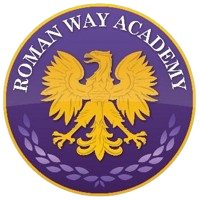Art and Design
How we teach, learn and assess Art and Design at Roman Way Academy
At Roman Way Academy, we believe in the importance of Art and Design in order to develop the knowledge, skill, creativity and well-being it can provide. Beginning in the EYFS, children are encouraged to explore different mediums, and develop their control, concentration and self-expression. Further opportunities to express individual ideas and hone artistic skills and techniques continue into KS1 and beyond. Each child is unique, and we encourage individuality, ownership and the confidence to represent and produce art in a way that speaks to them using their skills and knowledge of artists, craftworkers and designers they have learnt along the way.
The teaching of Art and Design at Roman Way is derived from the National Curriculum and is skills and knowledge based, with a strong focus on exposing children to a range of art and artists that link to the skills they are learning and exploring. Deliberate teaching of key skills, such as sketching, occurs as discrete learning opportunities. Art is taught by providing children with opportunities to explore artists, artwork, materials and techniques before discussing, creating and evaluating the unique work they produce. The key areas of art covered throughout the school are:
- Sketching and drawing;
- Colour work and painting;
- Collage and mixed media;
- Sculpture;
- Printing and pattern;
- Knowledge of artists, and evaluation.
Teachers seek to develop subject specific vocabulary through explicit teaching and modelling. Key art and design skills and knowledge are revisited frequently, to make learning memorable, relevant and easy to retrieve.
Teachers assess Art regularly through formative assessments in a variety of ways. The Roman Way progressive skills ladder and the long term overview which shows the progression of Art towards the end of key stage National Curriculum outcomes, supports the planning and assessment of Art. Teachers will start lessons with a retrieval question which gives the children the opportunity to question, explore and strengthen their understanding.
Lessons will also have a learning objective, allowing assessment at the end of the lesson to be clear and concise. Both teachers and support staff work together to support children and reflect upon their understanding and skills in order to inform future lessons. Other types of formative assessments are also used within Art and Design as part of the Roman Way Assessment Strategy. Termly assessments are recorded on Insight and progress is reported to parents at the end of each academic year as part of the annual report.
Useful links:
Art and Design Programmes of Study Key Stage 1 and 2
The Artful Parent – ideas for art activities for the family
Google Arts and Culture – explore paintings in detail and virtually step inside an art gallery
